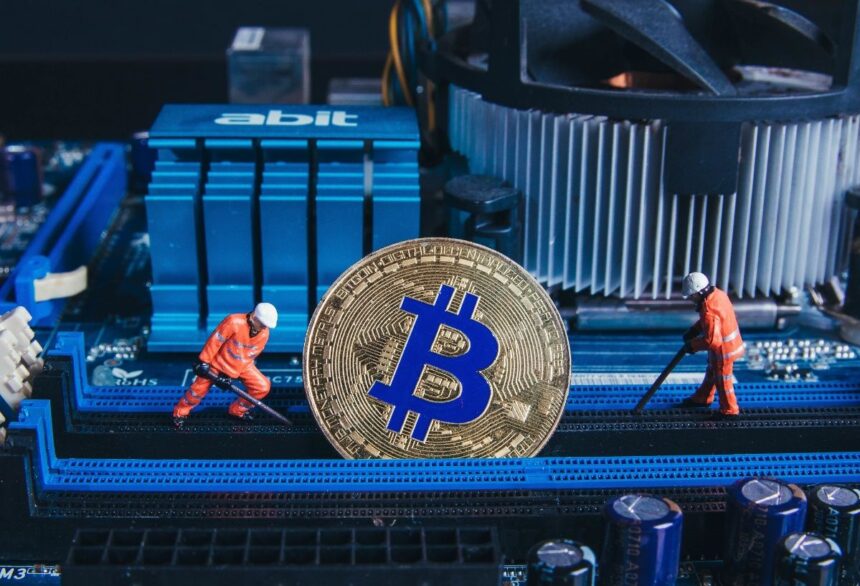The cryptocurrency landscape continues to evolve rapidly, and finding the best Bitcoin mining hardware in 2025 has become more critical than ever for miners seeking profitable operations. With Bitcoin’s price volatility and increasing network difficulty, choosing the right mining equipment can make the difference between substantial profits and significant losses.
In today’s competitive mining environment, the best Bitcoin mining hardware 2025 offers superior hash rates, energy efficiency, and long-term reliability. Whether you’re a seasoned miner looking to upgrade your operation or a newcomer entering the mining space, understanding which hardware delivers the highest return on investment is essential for success.
This comprehensive guide explores the top-performing ASIC miners, compares their specifications, analyzes profitability metrics, and provides expert insights to help you make informed decisions about your mining investments in 2025.
What Makes Mining Hardware the Best in 2025?
Before diving into specific models, it’s crucial to understand the key factors that define superior mining hardware. The cryptocurrency mining industry has matured significantly, with manufacturers focusing on several critical performance metrics.
Hash Rate Performance remains the primary indicator of mining power. Modern ASIC miners deliver unprecedented hash rates, with top-tier models exceeding 200 TH/s (terahashes per second). This raw computational power directly translates to your mining pool contributions and potential earnings.
Energy Efficiency has become equally important as electricity costs continue to impact profitability. The best miners achieve optimal J/TH (joules per terahash) ratios, minimizing operational expenses while maximizing output. Leading manufacturers have achieved efficiency levels below 20 J/TH, representing significant improvements over previous generations.
Build Quality and Longevity separate premium hardware from budget alternatives. Professional-grade miners feature robust cooling systems, high-quality components, and comprehensive warranty coverage. These factors ensure consistent performance throughout the hardware’s operational lifespan.
Manufacturer Support includes firmware updates, technical assistance, and replacement parts availability. Established manufacturers provide ongoing support that protects your investment and maintains optimal performance over time.
Best Bitcoin Mining Hardware 2025 – Top ASIC Miners Reviewed
Bitmain Antminer S21 Pro: Industry Leadership Continues
The Antminer S21 Pro represents Bitmain’s latest flagship offering, delivering exceptional performance that positions it among the best Bitcoin mining hardware 2025 options available. With a maximum hash rate of 234 TH/s and power efficiency of 15.0 J/TH, this miner sets new industry standards.
Technical Specifications:
- Hash Rate: 234 TH/s (±5%)
- Power Consumption: 3,510W (±5%)
- Power Efficiency: 15.0 J/TH
- Operating Temperature: 0°C to 40°C
- Network Connection: Ethernet
- Dimensions: 430mm x 195.5mm x 290mm
The S21 Pro incorporates advanced cooling technology with dual fans and an optimized airflow design. This engineering ensures stable operation even under demanding conditions, making it suitable for both home and industrial mining operations.
Profitability Analysis: Based on current Bitcoin prices and network difficulty, the S21 Pro generates approximately $12-15 daily profit (before electricity costs) when mining in established pools. The hardware typically achieves ROI within 8-12 months under optimal conditions.
WhatsMiner M60S: Competitive Performance Alternative
MicroBT’s WhatsMiner M60S offers compelling competition to Bitmain’s dominance, delivering 172 TH/s with impressive 16.5 J/TH efficiency. This miner appeals to operators seeking reliable performance with competitive pricing.
Key Features:
- Hash Rate: 172 TH/s
- Power Consumption: 2,838W
- Power Efficiency: 16.5 J/TH
- Enhanced cooling system with temperature monitoring
- Robust PSU with 93% efficiency rating
The M60S features MicroBT’s proprietary chip technology, delivering consistent hash rates with minimal variance. The unit’s compact design makes it suitable for space-constrained mining facilities while maintaining excellent thermal management.
Canaan AvalonMiner A1366: Energy Efficiency Focus
Canaan’s A1366 prioritizes energy efficiency without sacrificing performance, achieving 130 TH/s at just 18.5 J/TH. This makes it particularly attractive for miners in regions with higher electricity costs.
Standout Characteristics:
- Optimized for low-power consumption
- Quiet operation suitable for residential use
- Advanced fault detection and recovery systems
- User-friendly web interface for monitoring and configuration
Mining Hardware Comparison and Performance Metrics
Hash Rate vs. Power Consumption Analysis
Understanding the relationship between hash rate and power consumption helps miners optimize their operations for maximum profitability. The best Bitcoin mining hardware 2025 achieves an optimal balance between these critical metrics.
Performance Tier Analysis:
- Premium Tier (200+ TH/s): Antminer S21 Pro, WhatsMiner M63S
- Mid-Range (150-200 TH/s): WhatsMiner M60S, Antminer S19k Pro
- Entry Level (100-150 TH/s): AvalonMiner A1366, Antminer S19j Pro
Each tier serves different market segments, from industrial-scale operations requiring maximum hash rate to smaller miners prioritizing efficiency and lower initial investment.
Cost-Benefit Analysis for Different Mining Scenarios
Large-scale mining Operations benefit most from premium-tier hardware despite higher upfront costs. The superior hash rates and efficiency translate to better ROI when operating hundreds or thousands of units. Bulk purchasing often provides additional cost savings.
Medium-Scale Miners typically find mid-range hardware offers the best balance of performance and affordability. These miners provide solid returns while requiring more modest initial investments, making them accessible to serious hobbyists and small commercial operations.
Home Miners should consider entry-level options that balance performance with noise levels, power requirements, and heat generation suitable for residential environments.
Electricity Costs and Mining Profitability

Calculating Mining Profitability in 2025
Successful Bitcoin mining requires careful analysis of electricity costs, which typically represent 60-80% of operational expenses. The best Bitcoin mining hardware 2025 minimizes these costs through superior energy efficiency.
Profitability Factors:
- Local electricity rates ($/kWh)
- Mining pool fees (typically 1-3%)
- Network difficulty adjustments
- Bitcoin price volatility
- Hardware depreciation
Break-Even Analysis: Most modern ASIC miners achieve profitability when electricity costs remain below $0.08-0.12 per kWh, depending on current Bitcoin prices and network conditions.
Energy Efficiency Improvements
Recent hardware generations have achieved remarkable efficiency improvements, with leading models consuming 40-50% less power than previous generations while delivering higher hash rates. This evolution makes mining profitable in regions previously considered unsuitable due to electricity costs.
Setting Up Your Bitcoin Mining Hardware
Installation and Configuration Best Practices
Proper installation significantly impacts your mining hardware’s performance and longevity. The best Bitcoin mining hardware 2025 requires appropriate infrastructure to deliver optimal results.
Environmental Requirements:
- Ambient temperature: 15-25°C for optimal performance
- Adequate ventilation: 200+ CFM airflow per unit
- Stable electrical supply with surge protection
- Reliable internet connection with low latency
Initial Setup Process:
- Unpack and inspect hardware for shipping damage
- Install in a rack or an appropriate mounting system
- Connect the power supply and verify voltage compatibility
- Establish network connection and configure IP settings
- Access the web interface and configure pool settings
- Monitor initial operation and temperature readings
Mining Pool Selection and Configuration
Choosing the right mining pool affects your earnings consistency and payout frequency. Leading pools like Foundry USA, AntPool, and F2Pool offer different fee structures and payout methods.
Pool Selection Criteria:
- Pool hash rate and market share
- Fee structure (PPS, PPLNS, etc.)
- Payout frequency and minimum thresholds
- Geographic server locations
- Additional services and support
Maintenance and Optimization
Regular Maintenance Procedures
Maintaining your mining hardware ensures consistent performance and extends operational lifespan. The best Bitcoin mining hardware 2025 requires systematic maintenance to preserve warranty coverage and optimize returns.
Monthly Maintenance Tasks:
- Clean dust from fans and heat sinks
- Verify firmware updates availability
- Monitor performance metrics and error logs
- Inspect power connections and cables
- Test cooling system functionality
Quarterly Deep Maintenance:
- Disassemble units for thorough cleaning
- Replace thermal paste if necessary
- Inspect and tighten all connections
- Update firmware to the latest stable versions
- Calibrate temperature sensors
Performance Optimization Techniques
Firmware Optimization: Many manufacturers release firmware updates that improve efficiency, stability, and compatibility with mining pools. Staying current with updates ensures optimal performance.
Overclocking Considerations: Advanced users may explore overclocking options, though this requires careful monitoring and may void warranties. Proper cooling becomes even more critical when operating beyond stock specifications.
Pool Optimization: Switching between pools based on current profitability can increase earnings, though frequent changes may impact long-term statistics and payouts.
Future-Proofing Your Mining Investment

Technology Trends Shaping 2025
The mining hardware industry continues evolving rapidly, with several trends influencing the best Bitcoin mining hardware 2025 selections.
Advanced Chip Technology: Manufacturers are transitioning to smaller process nodes (5nm and 3nm), enabling higher transistor density and improved efficiency. These advances will likely define the next generation of mining hardware.
Liquid Cooling Solutions: High-performance miners increasingly incorporate liquid cooling systems for improved thermal management and quieter operation. This technology enables higher hash rates in compact form factors.
AI-Enhanced Optimization: Machine learning algorithms are being integrated into mining software to optimize performance automatically based on environmental conditions and network parameters.
Market Dynamics and Supply Chain
Supply Chain Considerations: Global semiconductor shortages continue affecting hardware availability and pricing. Planning purchases well in advance and maintaining relationships with multiple suppliers helps ensure equipment availability.
Regulatory Environment: Changing regulations worldwide impact mining operations and hardware demand. Staying informed about local regulations helps make informed investment decisions.
ROI Calculations and Investment Strategies
Investment Timeline Planning
Successful mining operations require careful financial planning and realistic ROI expectations. The best Bitcoin mining hardware 2025 typically achieves positive returns within 6-18 months under favorable conditions.
Factors Affecting ROI:
- Initial hardware costs and shipping
- Electricity rates and infrastructure expenses
- Bitcoin price movements and volatility
- Network difficulty adjustments
- Hardware resale value and depreciation
Risk Management Strategies:
- Diversify across multiple hardware models
- Monitor break-even points continuously
- Consider fixed-rate electricity contracts
- Maintain emergency funds for repairs and upgrades
Scaling Operations Effectively
Gradual Expansion: Starting with a few units allows operators to learn systems and optimize operations before significant investments. This approach reduces risk while building expertise.
Infrastructure Scaling: Electrical capacity, cooling systems, and network infrastructure must scale proportionally with hardware additions. Planning these requirements prevents bottlenecks and ensures efficient operations.
Conclusion
Selecting the best Bitcoin mining hardware 2025 requires balancing performance, efficiency, cost, and long-term viability. The models reviewed in this guide represent the current pinnacle of mining technology, each offering unique advantages for different operational scenarios.
The Antminer S21 Pro leads in raw performance and efficiency, making it ideal for large-scale operations prioritizing maximum hash rate. The WhatsMiner M60S provides excellent value for mid-scale miners, while the AvalonMiner A1366 serves home miners seeking energy-efficient operation.







